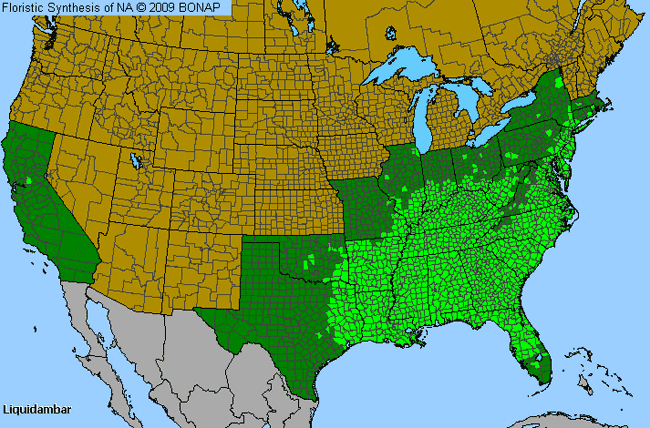Sweet-Gum (Liquidambar)

Sweet-Gum Genus Details

A native ornamental tree of the eastern U.S., Sweet-gum is valued for its foliage and scarlet autumn leaf color. The cone-shaped, aromatic deciduous tree will grow over 100 feet tall. The dark green leaves are star-shaped with 5-7 lobes and are about 4-7 inches across. Inconspicuous upright staminate (male) and pendulous pistillate (female) flowers are in separate, round greenish clusters on the same tree. Flowers appear in April and May as leaves emerge and are wind pollinated. A large number of round, prickly seed capsules are produced in late summer.
Sweet-Gum Allergy Info

Sweet-gum is considered to be mildly allergenic and found primarily in eastern U.S.
Sweet-Gum Pollen Description

Pollen grains of sweetgum are easy to identify by their spheroidal shape and pantoporate apertures with up to 20 large circular pores. The surface patterns of the grains are reticulate.
Pollen grains vary in size from 34-43 micrometers.
Species in This Genus

Allergenicity Legend:
 Mild Allergen |
Mild Allergen |
 Moderate Allergen |
Moderate Allergen |
 Severe Allergen |
Severe Allergen |
 Allergy Test Available
Allergy Test Available
Sweet-Gum (Liquidambar) is a genus of the HAMAMELIDACEAE family.
This genus includes the following allergenic species:
This genus includes the following allergenic species:












